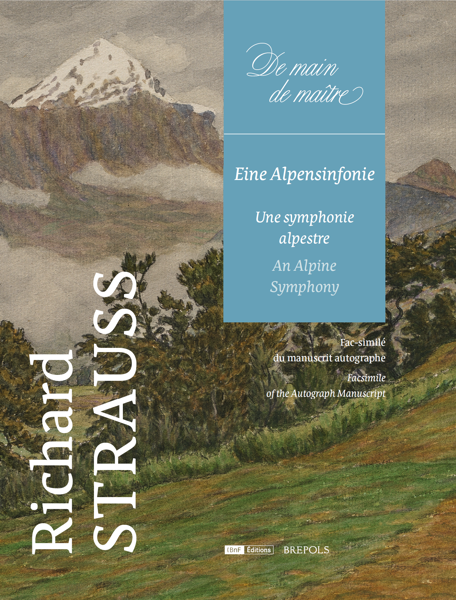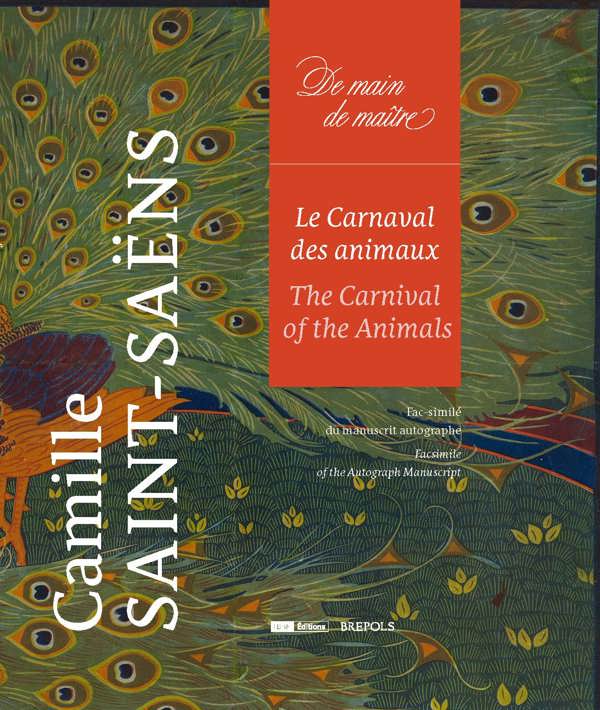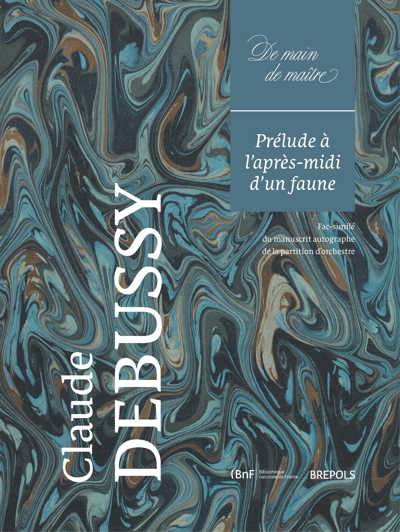
Camille Saint-Saëns, Le Carnaval des animaux
Facsimile Edition of the Autograph Manuscript
Marie-Gabrielle Soret
- Pages: 192 p.
- Size:300 x 366 mm
- Illustrations:127 col.
- Language(s):French, English
- Publication Year:2018
- € 220,00 EXCL. VAT RETAIL PRICE
- ISBN: 978-2-503-58122-4
- Hardback
- Available
If there is one work, in all of Saint-Saëns’ musical output that supremely captures the disposition so typical of the composer, it is the Carnival of the Animals.
Marie-Gabrielle Soret est conservateur en chef au Département de la musique à la Bibliothèque nationale de France, responsable de la coordination du traitement des grands fonds d’archives et collections des XIXe et XXe siècles, au Service des collections patrimoniales du Département de la musique (fonds de compositeurs, interprètes, institutions et sociétés musicales).
The collection “De main de maître” showcases the facsimiles of the most prestigious scores of the Music Department of the National Library of France.
Camille Saint-Saëns’ extremely long career – as a virtuoso, as a brilliant pianist and organist (no fewer than seventy-six years of concerts) – and his daunting catalogue of works (close to six hundred are known) have helped shape the image of him as a tutelary figure, omnipresent in the musical landscape of his time, the uncontested master of French music, showered with honours and glory, yet the champion of what was, in the young 20th century, an outmoded aesthetic. Such an image ignores, however, that from the outset of his career, at the end of the 1850s, until the 1890s, Saint-Saëns was, on the contrary, regarded in the artistic world as an agitator, as a propagator of new ideas and as an intermediary between French and Germanic cultures. Republican from his earliest days, he was a major figure in musical life, involved in many concert societies, most notably the Société nationale de musique, which he founded in 1871. He was also a polemicist, whose quill was much feared and who used the press as his vehicle of choice, to disseminate his ideas, attract public attention, and conquer new audiences. Similarly, if the image of the ‘official’ Saint-Saëns, at home with the stage and the institutions and their etiquette, has endured, that of the ‘intimate’ Saint-Saëns, known by a faithful few for his sparkling conversation, his sharp humour and taste for puns, has been lost. If there is one work, in all of Saint-Saëns’ musical output that supremely captures the disposition so typical of the composer, it is the Carnival of the Animals.
Dedicated to the autograph manuscript of Camille Saint-Saëns’ famous Carnival of the Animals (1835-1921), this volume sheds a distinctive light on the musician’s personality. Completed in February 1886, The Carnival of the Animals was created for friends and performers close to Saint-Saëns and was performed about fifteen times between 1886 and 1894 to a small audience. Because Camille Saint-Saëns feared that his “zoological fantasy” would damage his reputation, the work was published in its entirety only after his death. Since then, its immense popularity has continued to grow, so much so that it is now enjoyed by music lovers and the general public alike.
Presented by Marie-Gabrielle Soret, a specialist of Camille Saint-Saëns, who provides a detailed description of the work and the context of its creation, the facsimile includes the fourteen pieces of The Carnival of the Animals. It reveals the composer’s handwriting, all the performance directions as he noted them, but also to the playful animal drawings with which he decorated his score – a fish for “Aquarium”, the skeleton of a dinosaur for “Fossiles”, the pale blue pencil silhouette of a swan to illustrate the famous “Swan”.
La collection « De main de maître » présente les fac-similés des partitions les plus prestigieuses du département de la Musique de la Bibliothèque nationale de France.
Dédié au manuscrit autographe du célèbre Carnaval des animaux, de Camille Saint-Saëns (1835-1921), ce volume éclaire la personnalité du musicien sous un jour particulier. Achevé en février 1886, Le Carnaval des animaux fut créé pour des amis et interprètes proches de Saint-Saëns et joué à une quinzaine de reprises entre 1886 et 1894 auprès d’un public restreint. Camille Saint-Saëns craignant que cette « fantaisie zoologique » ne nuise à sa réputation, l’oeuvre ne fut publiée dans son intégralité qu’après la mort du compositeur. Depuis lors, son immense succès n’a cessé de croître, si bien qu’elle est aujourd’hui appréciée tant par les mélomanes que par le grand public.
Présenté par Marie-Gabrielle Soret, spécialiste de Camille Saint-Saëns, qui nous livre une description détaillée de l’oeuvre et du contexte de sa création, le fac-similé comprend les quatorze pièces du Carnaval des animaux. Il permet d’accéder à la graphie du compositeur, à l’ensemble des indications telles qu’il les a notées, mais aussi aux facétieux dessins animaliers dont il émailla sa partition – un poisson pour « Aquarium », un squelette de dinosaure pour « Fossiles », ou encore la pâle silhouette au crayon bleu d’un cygne pour accompagner la célèbre pièce dédiée à cet oiseau.


